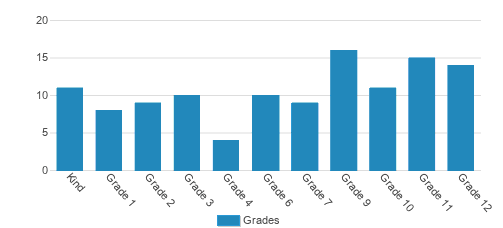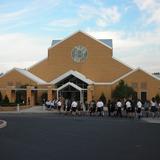Our mission is to provide children with autism and special needs a safe, structured educational environment with caring, supportive services that give our students the necessary skills and independence to lead a productive life. We serve students in Preschool through High School
Quick Stats (2025)
- School Type: Special Education School
- Grades: Kindergarten-12
- Enrollment: 156 students
- Average class size: 7 students
- Application Deadline: None / Rolling
- Source: Verified school update
School Overview
School Type
Religious Affiliation
Grades Offered
Grades Kindergarten-12
Learning Difference Programs
Yes
Year Founded
1953
School Calendar
Student Body
Total Students
156 students
Student Body Type
Co-ed
% Students of Color
33%
State avg.: 25%
Students by Grade

Academics and Faculty
Total Classroom Teachers
24 teachers
Student : Teacher Ratio
7:1
National avg.: 13:1
Average Class Size
7 students
Tuition and Acceptance Rate
Admission Deadline
None / Rolling
School Notes
- Preschool Age:2-6
- Benefits:Students who begin their educational journey and therapy early are proven to have the most progressive results. We serve as a resource for parents just learning their child has special needs, challenging behaviors or has been recently diagnosed with Autism. Step Up To Quality 5 Star Rating; weekly Gymsters program.
- Facilities:Safe, secure site offers 4 classrooms; indoor/outdoor playground; kitchen; iPads located in all classroomsLocations:Potential Development Preschool Youngstown and PD`s Place HowlandHours:M-F 9:00am 3:00pm
- Elementary & Middle School:Kindergarten through grade 8
- Benefits:Students excel in classrooms that cater to their specific needs and learn best with lesson plans designed for each individual student.
- Facility:17,000 square foot facility; 10 classrooms; indoor and outdoor play areas; three therapy rooms; group room; parent resource room; iPads located in all classrooms; non-public charter school.Hours:M-F 8:30am 2:30pm
- High SchoolGrades: 9-12 (ages 14-22)
- Benefits:Students can earn a high school diploma while learning employment and life skills necessary to grow into independent young adults.Facility:New 30,000 square ft facility with fitness center, model apartment, science lab, occupational & speech therapy rooms, non-public charter school; interactive projectors and iPads located in all classrooms.Hours:M-F 8:30am 2:30pm
Source: Verified school update
Frequently Asked Questions
When is the application deadline for Potential Development Program School Of Autism?
The application deadline for Potential Development Program School Of Autism is rolling (applications are reviewed as they are received year-round).
In what neighborhood is Potential Development Program School Of Autism located?
Potential Development Program School Of Autism is located in the Oak Hill neighborhood of Youngstown, OH.
School Reviews
Endorse Potential Development Program School Of Autism. Endorsements should be a few sentences in length. Please include any comments on:
- Quality of academic programs, teachers, and facilities
- Availability of music, art, sports and other extracurricular activities
- Academic or athletic awards
Recent Articles

A Parent's Guide To Understanding High School Teaching Methods
This comprehensive guide helps parents navigate the various teaching methods used in today's high school classrooms. By understanding these approaches, you'll be better equipped to support your teen's learning journey, communicate effectively with teachers, and create a complementary learning environment at home.

February 08, 2025
Social Emotional Learning: Education's Hidden SymphonyA musician's perspective on Social Emotional Learning reveals how this educational framework orchestrates success through five essential emotional competencies.

January 24, 2025
A Roadmap For Starting A Private SchoolUse this roadmap as a set of talking points with your trusted mentors and professionals to start the private school of your dreams. You're not alone. Over the years, hundreds of folks like you have had the same dream. From Quintilian to Maria Montessori to Lucy Madeira Wing, visionary educators have established schools to teach according to their beliefs and methodologies.















